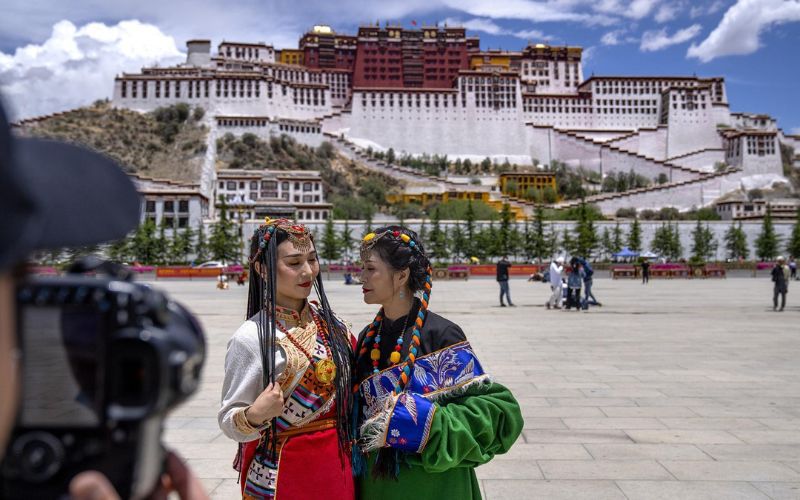
On this World Tourism Day, it is crucial to recognize and address China's exploitation of tourism as a means to divert attention from human rights abuses and environmental destruction in occupied Tibet. The world must not allow the erasure of Tibetan culture and the marginalization of its people to continue unchecked.
01. China Exploits Tourism to Divert Attention
The Chinese Communist Party (CCP) is using tourism as a tool to divert attention from the grave human rights violations and environmental degradation taking place in occupied Tibet. By promoting speeches from so-called "experts," China aims to portray itself in a favorable light while obliterating the historical and cultural significance of Tibetan heritage.
02. Restrictions on Entry Despite Tourism Emphasis
While the CCP promotes tourism in Tibet, it enforces strict restrictions on both local Tibetans and foreign tourists. Remote Tibetan areas have been opened up for Chinese tourists, with visitor numbers soaring to 44,000 per year by 1987. However, access to Tibet became limited again in 1989 following violent protests in Lhasa. Currently, independent travel is not allowed in Tibet, and visitors must join organized tours with guides, revealing the CCP's selective control over entry into the region.
03. Selective Emphasis
The Chinese government employs "radical selectivity" in choosing which places, people, and practices to emphasize in its UNESCO nominations. This approach allows China to shape the narrative and historical significance of cultural sites like the Potala Palace.
04. A Symbol of Han-Chinese Tourism
Potala Palace has been commodified as a tourist attraction, and CCP state-sponsored media and bureaucrats use Potala as the poster child for Han-Chinese Tourism. These attempts are to erase the religious and cultural significance of Tibetan structure.
05. Pollution Crisis in Tibet
Tourism in Tibet has led to an alarming garbage crisis, with tons of waste being thoughtlessly discarded by visitors along highways. This disregard for the environment is polluting the "Roof of the World," tarnishing its natural beauty, and endangering the delicate ecosystem.
06. Erasing Tibetan Heritage
The CCP's exploitation of tourism includes the treatment of the iconic Potala Palace. This UNESCO World Heritage site is being transformed into a mere tourist attraction, diminishing its historical, religious, and cultural significance. The deliberate erasure of the past seeks to rewrite history and deny Tibetans their rich heritage.
07. Economic and Strategic Control
China's exploitation of tourism is part of a broader plan to tighten its grip on Tibet economically and strategically. The CCP's actions trivialize Tibetan culture, marginalize its people, and damage the region's natural resources.
08. Transformation of Lhasa
China's redevelopment work in Lhasa includes the construction of shopping malls, car parks, hotels, and other facilities seemingly aimed at accommodating Chinese tourists. Tibetan monasteries are being converted into hotel rooms without consideration for Tibetan sentiments.
09. Tibetan Tourism as a Cover-Up for Political Repression
China is using Tibetan tourism to legitimize China’s rule and attempts to cover up the harsh reality of six decades of political and cultural repressions
10. International Awareness Needed
It is incumbent upon the international community to pay attention to these abuses and hold China accountable for its disregard for human rights and the environment in Tibet.
Edited and collated by Team TRC